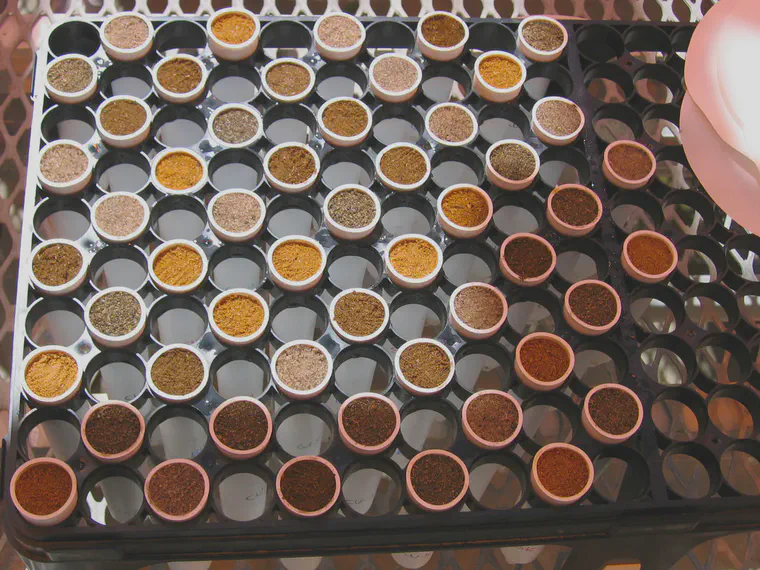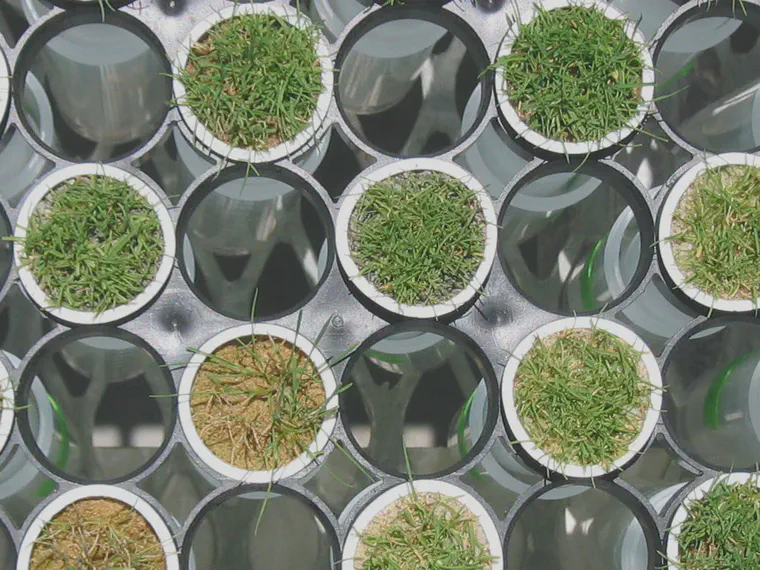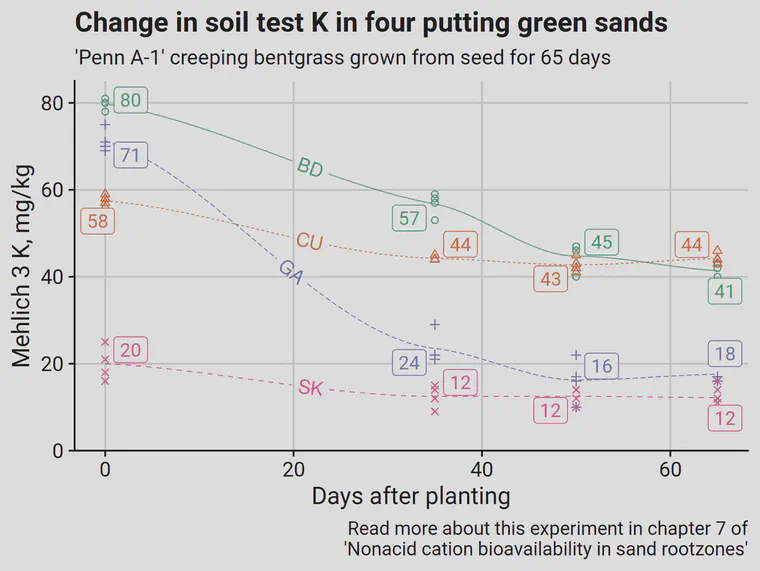Soil nutrient levels change
Soil nutrient levels change because grass is growing and grass uses nutrients. This change is in one direction—down—because nutrients are removed from the soil as the grass grows. Fertilizer addition and addition of nutrients through irrigation water or topdressing materials can cause soil nutrient content to increase.
Because soil nutrient levels change, I recommend taking the expected plant use of each nutrient for whatever time one is making a fertilizer plan for, adding that to the amount of a nutrient that one wants to keep as a reserve in the soil, and subtracting the current soil test value for that nutrient. This technique provides a site-specific fertilizer recommendation.
To illustrate how nutrient levels can change, I looked at Mehlich 3 potassium from four different sands in which I grew ‘Penn A-1’ creeping bentgrass from seed in a 65 day experiment. Each of these sands was collected from a golf course putting green or from an on site sand dune from which the golf course putting greens were constructed.

The seed was planted at a rate of 7.5 g/m2 (1.5 lbs/1,000 ft2) and the grass was fertilized with N, P, and S, but no K. I grew the grass for 65 days and destructively harvested some of the conetainers 35, 50, and 65 days after planting.

This experiment only lasted 65 days. Nine weeks and two days. That’s not a long time, but look how much the soil potassium changed in that time.

The BD sand dropped from 80 mg/kg to 41 mg/kg in 65 days. The CU sand went from 58 to 44. The GA sand (a silica sand) plummeted from 71 to 18. It went from 71 to 24 in only 35 days. The SK sand had very low K to begin with, at 20 mg/kg, and it dropped to 12 mg/kg and stayed there. The grass also pretty much stopped growing once the soil K dropped that low.
These drops in soil K show why simply looking at the soil test result is not enough to make an accurate fertilizer recommendation. One needs to look at expected plant use, and it is especially useful to check the soil again (I recommend one year later) to see how the soil nutrient levels have changed. This advice is especially relevant to sand rootzones. After the soil is checked again a year later, one gets a lot more information about how the soil nutrient levels have changed. If they haven’t changed much, or if they are changing in predictable ways in relation to how much fertilizer has been applied and how much the grass has grown, then the soil testing frequency can be safely reduced.